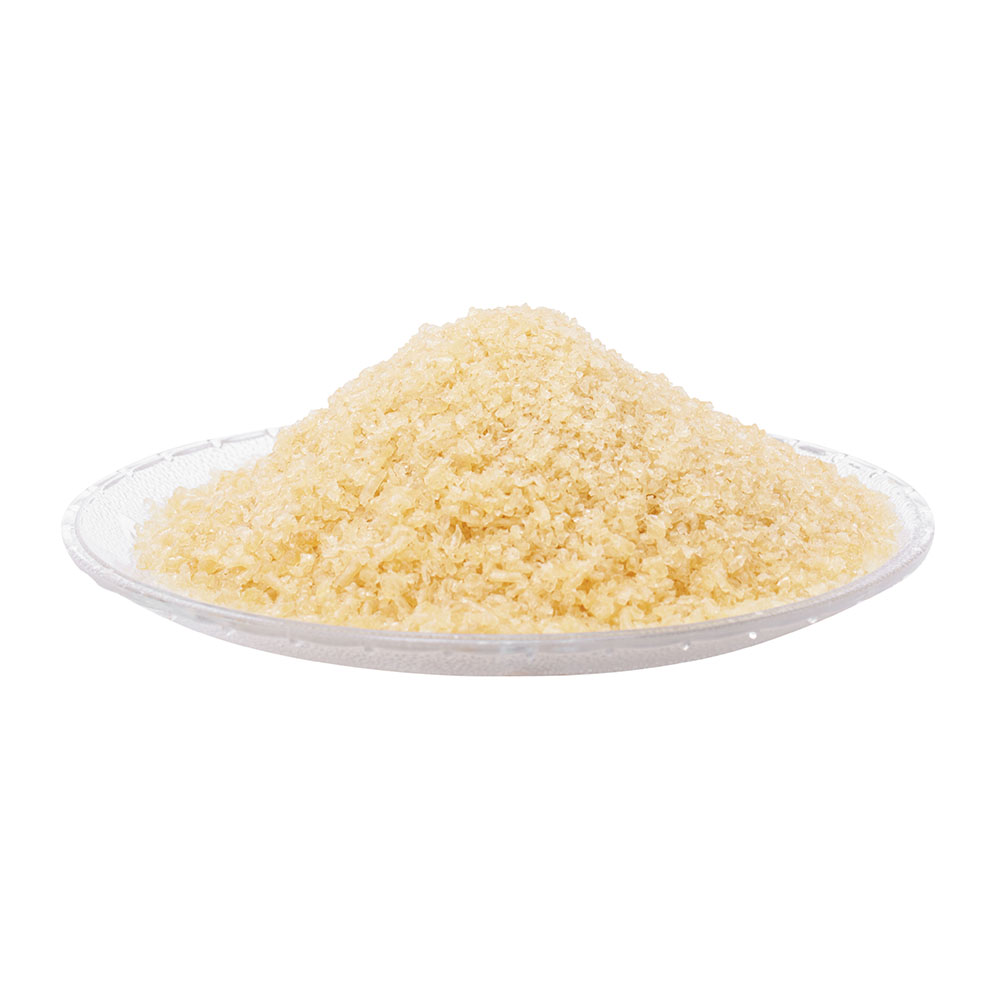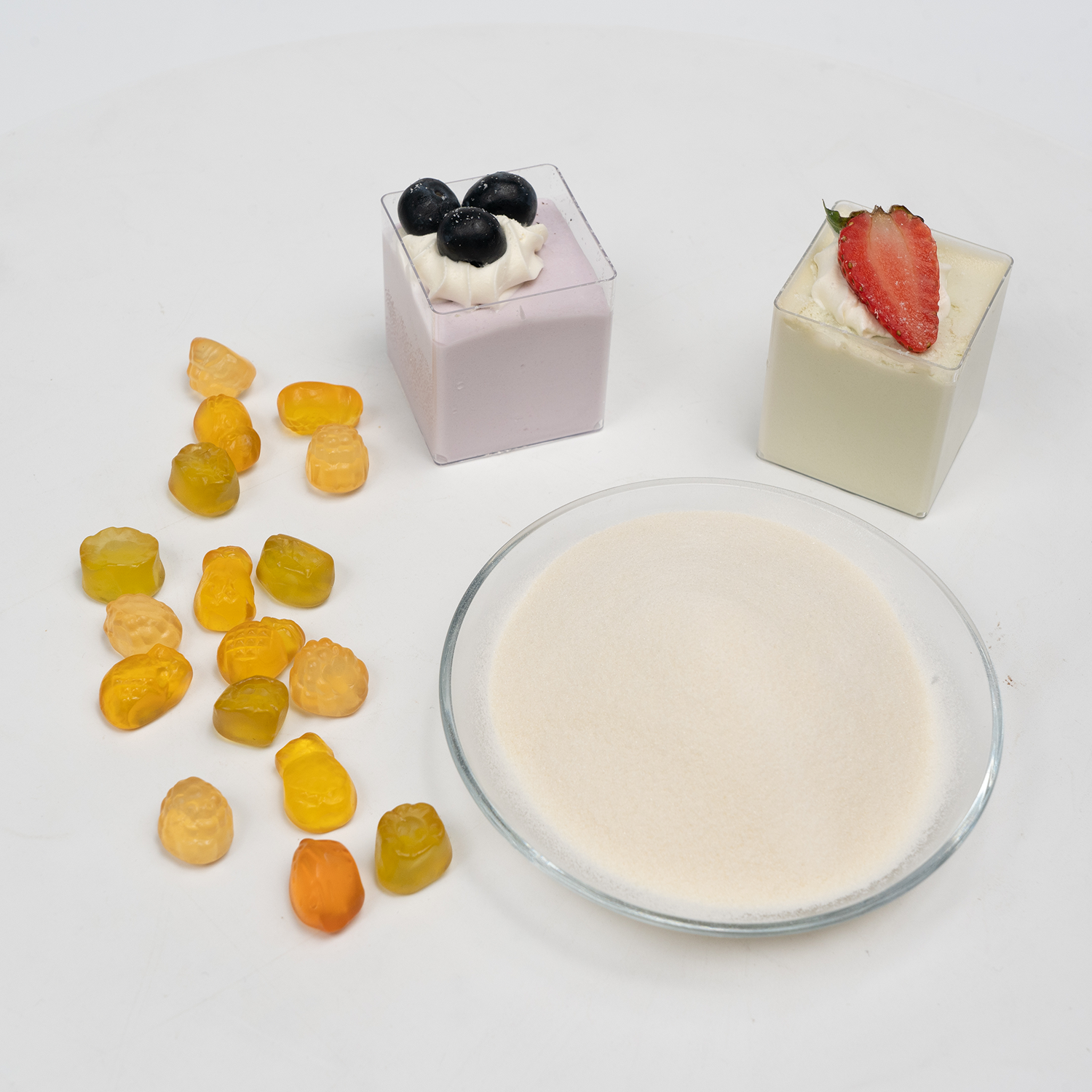Gelatin is a natural premium ingredient that is still active today in fondant or other confectionary production applications due to its irreplaceable thermally reversible gelling properties. However, the true potential of gelatin goes far beyond its intended applications. Gelatin is an essential ingredient in countless food applications and possesses many functional properties that cannot be easily imitated. Gelatin is an excellent binder, gelling and foaming agent, emulsifier and stabilizer, and perfect film former and foaming agent. It creates the perfect texture, provides a unique taste, and has the function of enhancing flavor release! And as a pure protein, it boosts the nutritional content of foods, is clean label compliant, and is non-allergenic. Due to its versatility and versatility, gelatin is an ideal ingredient choice for confectionery, dairy products and more.
Gelatin is a natural quality ingredient with many beneficial properties as a food additive. Gelatin is used in many ways in modern food production, for example to keep products in shape. Another example is a product made of gelatin that melts at body temperature and solidifies when cooled. Therefore, products containing gelatin melt in the mouth and guarantee ideal taste release. The pleasant properties of gelatin make them irreplaceable in the food sector. Free of cholesterol, sugar and fat, easy to digest and non-allergenic are also important properties of gelatin.
Gelatin also has advantages in the preparation of low-fat, low-sugar, low-calorie products. When people need to reduce the intake of glycolipids and experience the same taste, it can simplify the development and production of such products. For example, how do you get low-fat foods that taste the same as full-fat foods? We can add gelatin to cream cheese to improve its texture, enhance emulsification, reduce calories and create foam. Or in meat applications, gelatin can provide body, enhance flavor, improve organoleptic properties and reduce fat percentage.
Gelatin plays an extremely important role in the preparation and development of new varieties of dairy products and desserts. Using the right amount and type of gelatin can make light, creamy yogurt or variations of other common dairy products, such as ice cream. Gelatin is able to bind with water and is a universal emulsifier and stabilizer. It is able to mimic a "greasy" mouthfeel and is ideal for low-fat, half-fat or even zero-fat products. It makes zero-fat ice cream as smooth as full-fat ice cream, without additional additives. The excellent foam-forming properties and stability of gelatin itself allow dairy products, such as mousses and well-whipped cream products, to remain stable at room temperature and provide a pleasant mouthfeel.


Not only does gelatin provide the perfect texture for dairy products, it's also incredibly easy to make. Typically, gelatin needs to be dissolved before further processing. But in dairy production, the commonly used pasteurization temperatures are sufficient to completely dissolve the gelatin. Therefore, the pre-dissolution step is omitted in production, thereby simplifying the production process and reducing costs.
In addition to dairy products, many cuisines cannot be prepared without edible gelatin. Includes gummy bears, wine gum, chewy candies, fruit candies, marshmallows, licorice, and chocolate. Gelatin provides elasticity, chewiness and a longer shelf life. It forms and stabilizes the foam of lightweight, breathable confectionery, making product transport and storage easier.
The production of baked goods also requires the participation of gelatin. Since gelatins stabilize cream or cream fillings, they are convenient for making cakes. The use of various types of gelatin such as powdered, leaf or instant gelatin in the food industry allows manufacturers to freeze and thaw cakes easily and extend the shelf life of their products.
Gelatin in meat products is indispensable as an important source of protein. Judging from the eating habits of modern people, the proportion of fat and carbohydrate intake is often too high, while the protein intake is too little. Gelatin can effectively replace carbohydrates and fats in many foods, making meals more nutritious while effectively reducing calorie intake.
Gelatin also plays an important role in the preparation of low-fat or reduced-fat meals. Due to its ability to form oil-in-water emulsions, gelatin can partially replace the high fat content in many products. Often gelatin will act as a bulk enhancer. It binds water in the end product, adding bulk without adding calories. And at the same time, it can provide an oily and melt-in-the-mouth mouthfeel, thereby improving consumer acceptance. Gelatin is therefore ideal for developing high-quality, low-calorie products.
Not only that, gelatin can replace the role of sugar in food as a natural "glue". As a binder, gelatin can effectively reduce the calorie content and sugar content of food, while increasing the protein content of food. This is especially in line with the market trend towards low-sugar and protein-rich foods.
All in all, because of its many properties and advantages, gelatin is indispensable for the production of optimized food products that meet the specific needs of consumers. Consumers can enjoy low-fat, low-sugar and low-calorie products without compromising on taste experience.
Post time: Mar-01-2023







